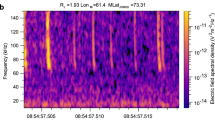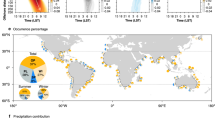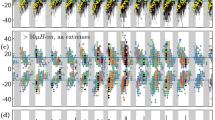Abstract
WITH reference to my letter in NATURE of August 30 on the subject of “An Unusual Rainbow,” and to the replies which were given on September 6, I should like to mention that the sun's altitude and the angle at which the primary bow met the reflected bow were only rough estimations. At the time when the phenomenon was visible I had unfortunately no instruments at hand. Since then I have calculated the altitude of the sun from a knowledge of the ship's position and the sun's declination and hour angle, and have found it to be about 8°.5. This gives the angle of intersection of the bows as 24¼° approximately, which is more in agreement with my estimation. The surface of the sea was remarkably calm at the time, and this no doubt accounts for the brilliancy of the bows, which are due to the reflected image of the sun.
This is a preview of subscription content, access via your institution
Access options
Subscribe to this journal
Receive 51 print issues and online access
$199.00 per year
only $3.90 per issue
Buy this article
- Purchase on Springer Link
- Instant access to full article PDF
Prices may be subject to local taxes which are calculated during checkout
Similar content being viewed by others
Rights and permissions
About this article
Cite this article
LOW, A. Unusual Rainbows. Nature 100, 44–45 (1917). https://doi.org/10.1038/100044c0
Issue Date:
DOI: https://doi.org/10.1038/100044c0
Comments
By submitting a comment you agree to abide by our Terms and Community Guidelines. If you find something abusive or that does not comply with our terms or guidelines please flag it as inappropriate.



